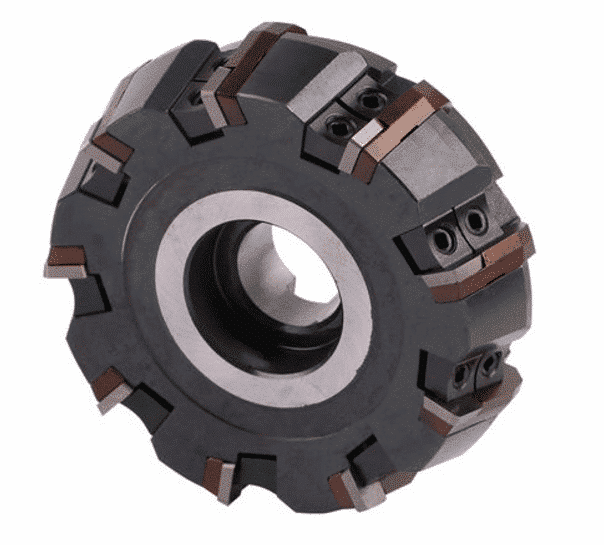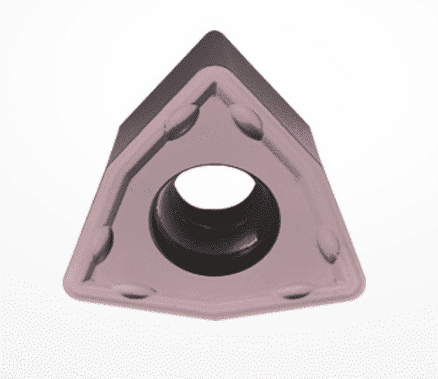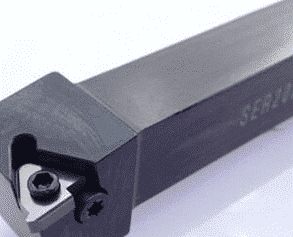En la producción diaria, la elección razonable del material y la forma de la herramienta de torneado afecta directamente la productividad laboral y la calidad de procesamiento de las piezas. En el proceso de corte, la herramienta debe soportar mucha fuerza de corte y fuerza de impacto, y trabajar a una temperatura alta, y soportar continuamente una fuerte fricción y extrusión, lo que es fácil de causar el desgaste y el da?o de la herramienta de torneado. Si los materiales de la herramienta no se seleccionan razonablemente, las piezas no cumplirán con los requisitos de uso, lo que provocará un desperdicio de material, da?os prematuros de máquinas herramienta y equipos, lo que provocará grandes pérdidas económicas. Por lo tanto, se deben seleccionar diferentes materiales de herramienta de acuerdo con diferentes materiales de mecanizado. La selección razonable de materiales para herramientas de corte no solo puede mejorar la eficiencia laboral y garantizar la calidad del procesamiento, sino también ahorrar costos y reducir la intensidad laboral de los trabajadores.
Elecciones razonables de material de herramienta.s
Los materiales de herramientas incluyen principalmente acero para herramientas al carbono, acero para herramientas de aleación, acero de alta velocidad, carburo cementado, cerámica y materiales para herramientas superduros.

El acero para herramientas de carbono y el acero para herramientas de aleación se utilizan principalmente para la fabricación de herramientas, matrices y herramientas de medición.
El acero de alta velocidad es un acero para herramientas con más elementos de aleación como tungsteno (W), molibdeno (Mo), cromo (Cr) y vanadio (V). Las herramientas de acero de alta velocidad son fáciles de fabricar, fáciles de afilar, fáciles de afilar a través del afilado y tienen una buena resistencia, que a menudo se usan en ocasiones con gran fuerza de impacto. Se utiliza especialmente para fabricar diversas herramientas de conformado complejas y herramientas de mecanizado de agujeros. El acero de alta velocidad se puede dividir en tungsteno y molibdeno de tungsteno. El acero de alta velocidad de tungsteno (W18Cr4V) se usa ampliamente en la actualidad, pero no se puede usar en el corte de alta velocidad debido a su baja resistencia al calor. El acero de alta velocidad de molibdeno de tungsteno (w6wo5cr4v2) se utiliza para fabricar herramientas de laminado en caliente, brocas helicoidales, etc.
El carburo cementado es un tipo de producto de pulvimetalurgia, que está hecho de polvo de tungsteno y carburo de titanio y cobalto como aglutinante, y luego se sinteriza a alta temperatura después del prensado a alta presión. Es el material de herramienta de torneado más utilizado en la actualidad. De acuerdo con la composición, existen tres tipos de aleación de tungsteno cobalto (tipo K), aleación de tungsteno titanio cobalto (tipo P) y aleación de tungsteno titanio cobalto tungsteno (tipo M). Los carburos cementados de tungsteno y cobalto están compuestos de carburo de tungsteno (WC) y cobalto (CO). Se utilizan principalmente para procesar hierro fundido, materiales frágiles u ocasiones con alto impacto. Los códigos de uso común son K01, K10 y K20. En general, K01 se utiliza para el acabado, K10 para el semiacabado y K20 para el mecanizado en bruto. El carburo cementado de tungsteno, titanio y cobalto está compuesto de carburo de tungsteno, cobalto y carburo de titanio. Es adecuado para procesar acero u otros materiales plásticos con alta tenacidad, pero es frágil, no resistente a los golpes y no es adecuado para procesar materiales frágiles. Los códigos comunes son P01, P10 y P30. En general, P01 se utiliza para el acabado, P10 para el semiacabado y P30 para el mecanizado en bruto. El tungsteno, el titanio, el tantalio y el cobalto son adecuados para procesar metales ferrosos y no ferrosos con astillas cortas o largas. Los códigos de uso común son M10 y M20. M10 se utiliza para el acabado y M20 se utiliza para el mecanizado en bruto. Las herramientas de corte de cerámica se utilizan principalmente para el semiacabado y el acabado de metales no ferrosos, hierro fundido y acero endurecido. Los materiales superduros son el nitruro de boro cúbico y el diamante: el nitruro de boro cúbico se utiliza para el semiacabado y el acabado de aleaciones, acero endurecido y hierro fundido refrigerado. El diamante puede cortar con precisión metales no ferrosos y aleaciones y materiales resistentes al desgaste con alta dureza.
Selección de cortador de roscados

La selección de la herramienta de torneado de roscas se usa ampliamente en todo tipo de productos mecánicos, y las piezas con rosca y tornillo sin fin se usan ampliamente. Las herramientas de torneado de roscas con diferentes ángulos se seleccionan de acuerdo con diferentes roscas.
(1) there are two kinds of triangular thread turning tools: high speed steel and hard alloy. The high-speed steel thread turning tool has the advantages of convenient grinding, easy sharpening, good toughness, not easy to crack the tip of the tool, small surface roughness value of the thread, but poor heat resistance, which is only suitable for low-speed thread turning. Hard alloy thread turning tool has high hardness, good wear resistance, high temperature resistance, good thermal stability, but poor impact resistance. Therefore, carbide thread turning tool is suitable for high speed cutting. In high-speed cutting, the actual profile will be enlarged, so the sharp angle of the tool should be reduced by about 30 ‘, and the roughness of the front and back face of the turning tool must be very small.
(2) when turning trapezoidal thread, the radial cutting force is large. In order to reduce the cutting force, it can be divided into rough turning and finish turning. During rough turning, in order to facilitate left and right cutting and reserve the finishing allowance, the width of the cutter head shall be smaller than the width of the bottom of the alveolar, the back angle of the diameter shall be about 8 °, the front angle shall be 10 ° – 15 °, the back angle of both sides shall be (3 ° – 5 °) ± ψ (thread rising angle), and the tooth angle shall be 30 ° 0 – 30 ′. The front angle of high-speed steel finishing tool diameter is 0, and the angle between the cutting edges on both sides is equal to the tooth angle. In order to ensure the smooth cutting on both sides of the cutting edge, the cutting edge should be grinded with a large rake angle (10 ° – 16 °). However, it must be noted that the cutting edge at the front end of the turning tool cannot participate in the cutting. The high-speed steel ladder thread turning tool can process the thread with high precision and small surface roughness, but the production efficiency is low. In order to improve production efficiency, carbide turning tools can be used for high-speed cutting when turning general precision threads.

(3) there are two kinds of commonly used worm: metric (20 °) and British (14.5 °). British worm is rarely used in China. Metric worm is mainly used. High speed steel turning tool is generally used for worm turning, and rough turning and fine turning are used for turning. During rough turning, it is required that the included angle between the cutting edges on the left and right sides is slightly less than twice the tooth shape angle, the width of the cutter head is less than the width of the tooth root slot, the left and right radial front angles of 10 ° ~ 15 ° are ground, the back angles of both sides are (3 ° ~ 5 °) ± ψ, and the cutter tip is properly rounded. When finishing, the included angle between the left and right edges is equal to twice of the tooth shape angle and should be symmetrical. The straightness of the cutting edge is better, the surface roughness value is small, and the chip rolling groove with large front angle (15 ° – 20 °) is ground. The above are only some basic ideas for the selection of turning tool materials and shapes. Due to the wide variety of cutting tools, the structural types and processing requirements of parts vary greatly. In practical operation, there is still a need for experience. Skilled personnel conduct scientific analysis based on the production conditions of schools and enterprises (production, planning, production compactness, scale, capital, etc.) and the conditions of processing parts and equipment, and select the cutting tools with reasonable performance and price, In this way, we can give full play to the potential of the equipment, ensure the processing quality, improve the processing efficiency, and improve the experience and efficiency of the enterprise.








